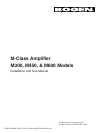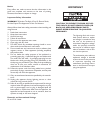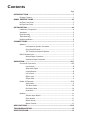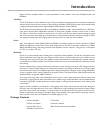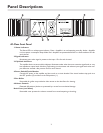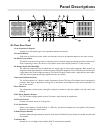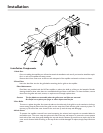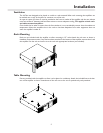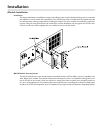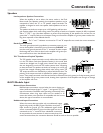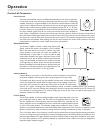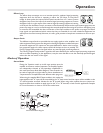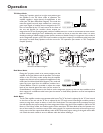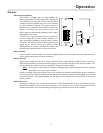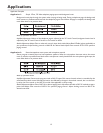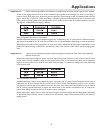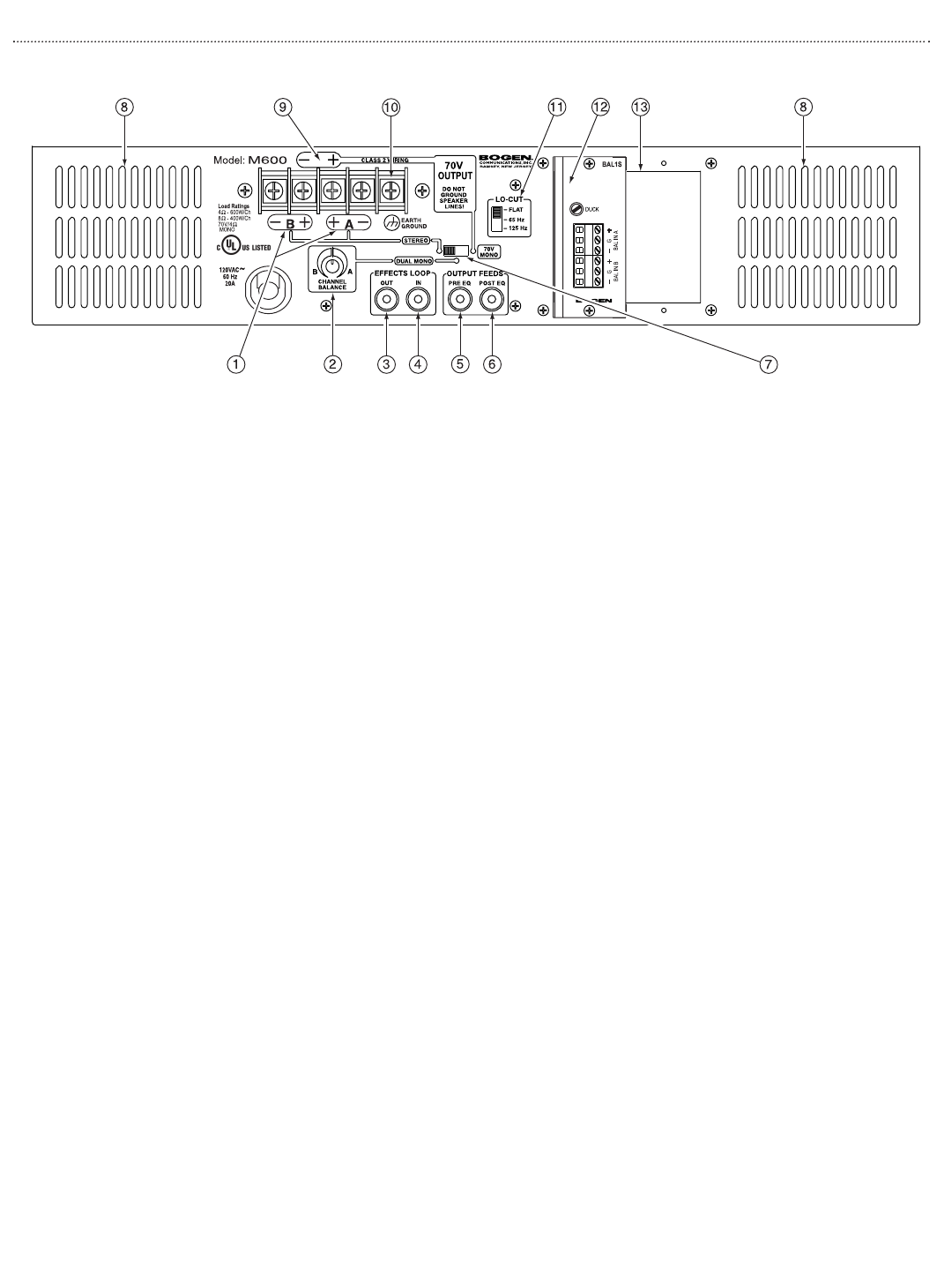
Panel Descriptions
M-Class Rear Panel
1. Low-Impedance Outputs
Accepts up to #10 spade lugs for low-impedance speaker connections.
2. Channel Balance
Only active in Dual Mono mode. Allows one channel’s volume to be adjusted relative to the other channel.
3/4. Effects Loop In/Out
The effects loop connectors provide an insertion point for outboard signal processing equipment when the M-
Class is operating in either 70V Mono or Dual Mono mode, where inputs provide a 2:1 mixer function.
5/6. Output Feeds (Pre/Post-EQ)
Two different output feeds are provided that can supply signal to other audio equipment. Both outputs are
designed to feed high-impedance, unbalanced inputs of external equipment.The Pre-EQ Output Feed provides
a signal before any external signal processing.The Post-EQ Output Feed provides a signal that has been affect-
ed by the external signal processing equipment and the lo-cut filter.
7. Operational Mode Selector
The M-Class amplifer has 3 distinct modes of operation (Stereo; 70V Mono; Dual Mono) that are designed to
provide a wide range of application coverage. For a description of the different modes, see the Operation sec-
tion of this manual.
8. Fan Exhausts
Two independent, variable speed cooling fans respond as needed to keep the amplifier cool and reduce dust
build-up.
9. 70V Mono Speaker Output
For 70V constant voltage speaker systems. Provides a single channel of amplification.
10. Chassis Ground
Provides convenient access to earth ground.
11. Lo-Cut Switch
Select a low-frequency roll-off of 65Hz or 125Hz for transformer-coupled and horn speakers. Flat position
allows full low-frequency performance.
12. BAL1S Input Module
Provides a balanced high-impedance input for each channel.The BAL1S Input Module is included standard with
the amplifier.
13. Module Bay
Accepts one or two Bogen input modules (BAL1S included with amplifier).
3



